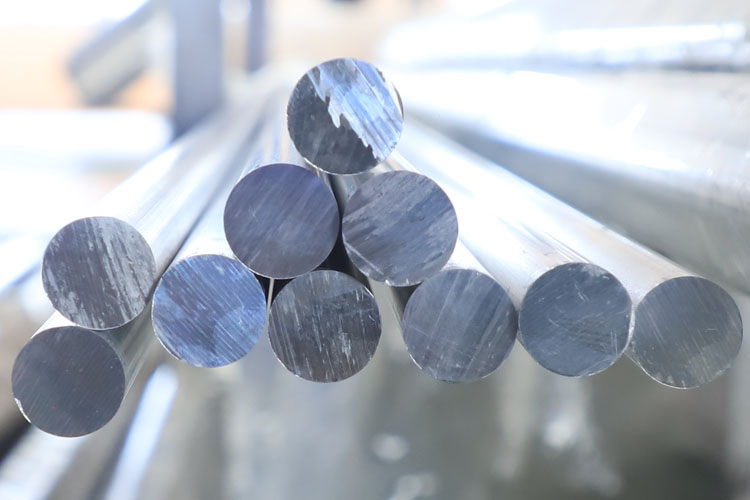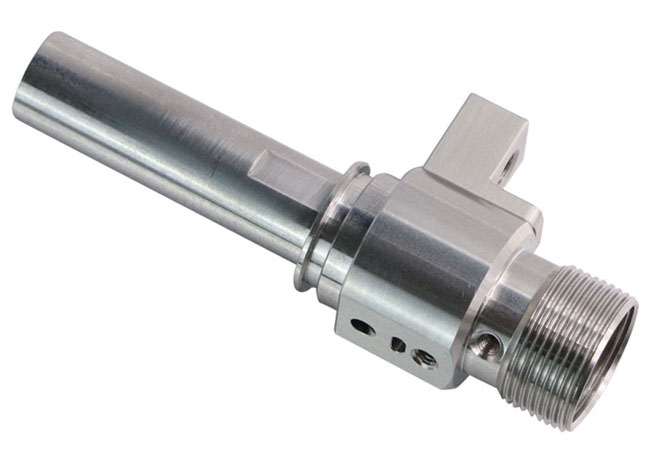Carbon Steel vs Mild Steel: Key Differences Between Carbon Steel and Mild Steel
Steel is an indispensable material in modern industry, construction and manufacturing. There are many types of steel, each with specific properties tailored for different applications. The most commonly used forms are carbon steel and mild steel. Although Although they may look similar in appearance, they differ significantly in their chemical composition, performance, and application.
Understanding the differences between carbon steel and mild steel is crucial to choosing the right material for your project. Therefore, this article aims to help your more comprehensively understand the performance characteristics of these two steels by carefully analyzing the differences in chemical composition, physical properties, machining and welding characteristics, corrosion resistance and application fields, so as to Make more reasonable choices in practical applications.

What is Carbon Steel?
Carbon steel is an iron-carbon alloy with a carbon content between 0.0218% and 2.11%. Its main characteristics are high strength and hardness, but relatively low plasticity and toughness. Carbon steel can be divided into low carbon steel, medium carbon steel and high carbon steel according to the carbon content. Among them, low carbon steel is favored for its good processing performance and weldability.
Types of Carbon Steel.
Below are some common types of carbon steel classified by carbon content:
Low carbon steel: Low carbon content, usually less than 0.25%. Low carbon steel is easy to accept various processing such as forging, welding and cutting, and is often used to make chains, rivets, bolts, shafts, etc.
Medium carbon steel: Medium carbon steel has a moderate carbon content, generally between 0.25% and 0.6%. Medium carbon steel has good hot working and cutting properties, but poor welding properties. Its strength and hardness are higher than low carbon steel, but its plasticity and toughness are relatively low.
High carbon steel: It has a high carbon content, usually greater than 0.6%. High carbon steel is often used to make tools such as knives, gauges, and molds that require high hardness and wear resistance.
What is Mild Steel?
Mild steel, also known as low carbon steel, is one of the most common types of steel. It has a relatively low carbon content, usually between 0.05% and 0.25%, making it highly flexible and ductile.
What is the Difference Between Carbon Steel and Mild Steel?
Differences in Composition Between Carbon Steel and Mild Steel.
The main difference between carbon steel and mild steel is their chemical composition, especially the content of carbon. Carbon steel has a higher carbon content, which makes it relatively hard and strong, but relatively low in plasticity and toughness. Mild steel has a lower carbon content, so it has better plasticity and toughness, and is easy to perform CNC machining, milling, turning and other CNC machining operations.
Differences in Corrosion Resistance Between Carbon Steel and Mild Steel.
Both carbon steel and mild steel are susceptible to corrosion, but their performance can vary depending on environmental factors and protective treatments. Steel is generally more susceptible to rust due to its higher carbon content, while mild steel can offer slightly better corrosion resistance when properly coated.
Differences in Strength and Hardness Between Carbon Steel and Mild Steel.
The carbon content of low carbon steel is usually less than 0.25%. Its strength and hardness are relatively low, but it has good plasticity and ductility.
However, carbon steel has a wider range of carbon content, usually between 0.30% and 2.0%. Due to the higher carbon content, carbon steel usually has higher hardness and strength than mild steel. The hardness range of carbon steel is generally between 120 and 360 Brinell hardness (HB), depending on the composition of the carbon steel material, heat treatment process and other factors.

The Difference in Toughness Between Carbon Steel and Mild Steel.
Compared to carbon steel, low carbon steel has higher toughness. Toughness is the property of a material that can absorb energy without breaking when subjected to external forces. Low carbon steel has a lower carbon content, which makes its internal structure relatively more uniform and stable, thereby improving its ability to resist deformation and fracture. Therefore, low carbon steel can better maintain its integrity and stability when subjected to impact or pressure, and is less likely to suffer brittle fracture.
In contrast, the toughness of carbon steel varies with its carbon content and alloying elements. Generally speaking, as the carbon content increases, the hardness and strength of carbon steel will increase, but the toughness will decrease accordingly. This is especially true for high-carbon steel, which has very high hardness and strength, but poor toughness and is prone to brittle fracture when subjected to impact or pressure.
Differences in Ductility Between Carbon Steel and Mild Steel.
Low-carbon steel is known for its excellent ductility and plasticity. It can easily meet the needs of various complex shapes and sizes, and is not easy to break or crack. It is very suitable for fields that require good formability, such as automobile manufacturing and home appliance manufacturing. The ductility of carbon steel varies with its grade and carbon content. Generally, as the carbon content increases, the hardness and strength increase, but the ductility decreases accordingly. Therefore, it is more suitable for structural parts such as bridges and buildings that need to withstand heavy loads and stress.
Cost Difference Between Carbon Steel and Mild Steel.
The difference between carbon steel and mild steel mainly comes from their raw materials and processing costs. Carbon steel, due to its high strength and hardness, is often accompanied by relatively high raw material costs. On the contrary, mild steel, with its excellent machining performance and weldability, can significantly reduce costs and save time during the machining stage. Therefore, when weighing performance and cost, you must make a choice based on the actual application scenario and specific needs.
Differences in Applications between Carbon Steel and Mild Steel.
Application Areas of Carbon Steel.
Carbon steel is widely used in machinery manufacturing, construction, bridges, vehicles and other fields due to its high strength and hardness. Especially in occasions where heavy loads and impact loads need to be borne, such as excavators, loaders, bridges, etc., carbon steel performs well. In addition, special-purpose carbon steel, such as alloy steel and stainless steel, also plays an important role in aerospace, petrochemical and other fields.
Application Areas of Low Carbon Steel.
Low carbon steel is widely used in the fields of automobile manufacturing, home appliance manufacturing, building structure, etc. due to its good plasticity and toughness, as well as its easy processing and welding characteristics. Especially in the field of automobile manufacturing, low carbon steel is widely used in key parts such as body structure and chassis components to improve the safety and durability of automobiles.
Key Differences Between Carbon Steel and Mild Steel
| Differences | Carbon Steel | Mild Steel |
| Ingredient Differences | High carbon content, increased hardness and strength | Low carbon content, enhanced plasticity and toughness |
| Corrosion resistance difference | Higher tendency to rust, requires protective treatment | Slightly better corrosion resistance, better coating |
| Strength and hardness | High hardness and strength, ranging from 120 to 360 HB | Low hardness and strength, but good plasticity |
| Difference in toughness | Toughness decreases as carbon content increases | High toughness, uniform and stable organizational structure |
| Difference in ductility | Ductility decreases as carbon content increases | Excellent ductility and plasticity, easy to shape |
| Cost Difference | Raw material costs are high, processing costs may be low | Good processing performance and weldability, low cost |
| Application Areas | Machinery manufacturing, construction, bridges, heavy-duty equipment | Automobile manufacturing, home appliances, building structures |
In Conclusion
Carbon steel and low carbon steel show significant differences in chemical composition, physical properties, processing and welding performance, corrosion resistance and application areas. When selecting materials, it is necessary to comprehensively weigh factors such as the use environment, performance requirements and cost budget.
Carbon steel, due to its higher content of carbon and other alloying elements, has higher hardness and strength, and is therefore particularly suitable for manufacturing products with high strength and high hardness requirements such as cutting tools, automotive parts and buildings. In contrast, low carbon steel is mainly composed of iron and a small amount of carbon and other elements. It is soft and easy to bend and shape. In addition, with the continuous advancement of CNC machining technology, the application prospects of low carbon steel in the field of CNC machining are becoming increasingly broad.
If you are looking for professional CNC machining services, VMT is your preferred partner. Contact VMT now!
Frequently Asked Questions About Carbon Steel and Mild Steel
Is Mild Steel Better Than Carbon Steel?
Mild steel and carbon steel each have their own advantages, and which one is better depends on the usage scenario and needs.
If you need a material that is easy to process, has good toughness and plasticity, low carbon steel is a better choice. If you need higher strength and hardness, carbon steel is more suitable.
How to Distinguish Between Carbon Steel and Mild Steel?
To differentiate between mild steel and carbon steel, it is the carbon content and characteristics that matter. Mild steel contains 0.04% to 0.3% carbon, making it softer, more ductile, easier to weld and form, but less strong. Carbon steel contains 0.3% to 1.0% carbon, making it harder and stronger, but less ductile and more brittle.
What are The Disadvantages of Carbon Steel?
The disadvantages of carbon steel include limited hardenability, usually the maximum water quenching diameter is only 10mm to 20mm; relatively low strength and yield strength, for example, the yield strength of Q235 steel is only 235MPa, which is lower than that of some low-alloy structural steels; poor tempering stability, and it is difficult to achieve high strength and high toughness at the same time during the quenching and tempering treatment; and its performance in oxidation resistance, corrosion resistance, heat resistance, low temperature resistance, wear resistance and special electromagnetic properties is poor, and it cannot meet special usage requirements.



